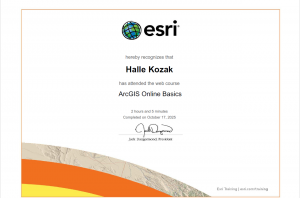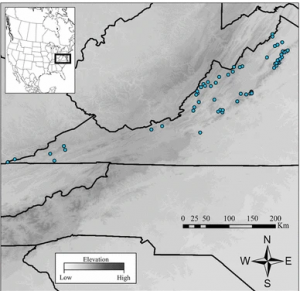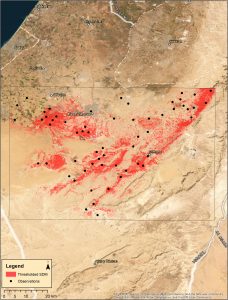Chapter 5:
Chapter 5 is about caching and on-premises(private) web GIS. One may need a private WebGIS for security, connectivity, or functionality. In order to create a private WebGIS, one can use ArcGIS Enterprise which includes a portal for ArcGIS, ArcGIS server, ArcGIS web adapter, and an ArcGIS Data Store. These different components work together to provide the best private network service. This chapter then discusses portal collaboration and the hierarchical structure of organizations. These organizations can share information with each other using groups, and Web GIS deployments are accomplished by using distributed collaboration. This helps to effectively organize, share, and network across organizations.
The chapter then gets into raster tile, vector tile, map image layers, feature tiles, and publishing strategy. Raster tiles deliver maps to client applications as image files that are prerendered and stored on the server. Vector tile layers deliver map data as many grouped vector files, usually in PBF. Map image layers are used for visualizing operational layers and are drawn dynamically by the server or by using tiles from a cache. Feature services are used to generate feature tiles when requested by ArcGIS client apps. These feature tiles enable web clients to display more features from the service and provide a faster load time. Publishing strategy is a term for selecting an appropriate layer type for your data.
The chapter then discusses web services standards. Standards specify the interface that different vendors can use and are important in achieving interoperability among vendors. It specifies the parameters, values, and results. OGC is the main standard body and has defined a set of standards for Web GIS services. The last section of chapter 5 is about workflow to share web layers from ArcGIS Pro. This section talks about publishing web layers by using ArcGIS pro. This is done in three main steps:
- Preparing the data using ArcGIS Pro
- Authoring the map in ArcGIS pro by adding data layers to the map and configuring layer symbols and other properties
- Sharing the web layer
Chapter 6:
Chapter six is about spatiotemporal data and real-time GIS. Spatiotemporal data can come from many different sources and includes observations of objects and events that move or change through time . It can be split into several groups including moving, discrete, stationary, and change.
- Moving→ something that moves
- Discrete → something that just happens
- Stationary→ stands still but values change
- Change→ change or growth
The time value of an event can be a point in time (values are typically stored in a single attribute field) or duration of time (values are typically stored in two fields, one for the start time and the other for the end time). IoT is a network of physical objects that are embedded with sensors and network connectivity that enable objects to collect and exchange data. Some included devices are airplanes, security cameras, and refrigerators. Geolocation provides context to the sensor data collected in the IoT ecosystem. It can transform raw data into information that can be used. Smart city is a popular app that uses connected sensors to supply information that assists a city in managing assets and resources. Smart homes often involve using wifi connected sensors and AI to help control a home. This can include Amazon Echo, smart thermostats, automatic lights, and geofences.
The next main section of focus is on cloud, server, and client-side technologies for real-time GIS. ArcGIS Velocity and ArcGIS GeoEvent Server can connect to multiple forms of streaming data to perform data processing and analysis. It can also send updates and alerts when prompted. Both of the programs are able to collect, process, and store high-volume- and high velocity real-time data that is generated by the IoT. ArcGIS Velocity has a few newer types of items including feed items, real-time analytic items, and big data analytic items.
Another product talked about in this chapter is ArcGIS Mission. It provides managers, analysts, and responders with a comprehensive picture of the operating environment. It ultimately helps with the coordination of movement, and communication among team members. The three main components are Mission Manager, Mission Responder, and Mission Server.
One possible application that I could make based off of chapter 6 is to create a dashboard web app for the Grafton County Dispatch in Central NH that coordinates fire and EMS response from the included towns. This app could show 911 reports, incidents, and categories of calls per county and per town. It would help visual emergency response in rural areas and show what calls are the most frequent. This could help with future training based on call volume.



